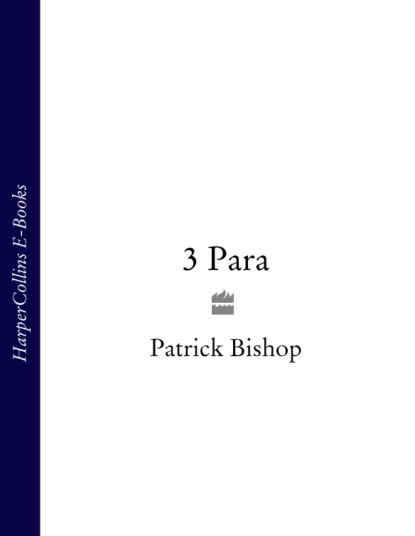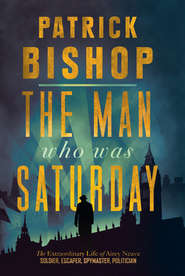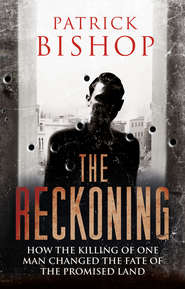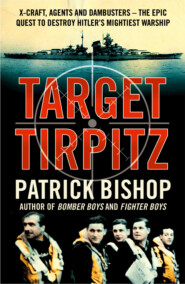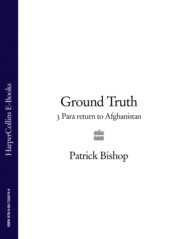По всем вопросам обращайтесь на: info@litportal.ru
(©) 2003-2024.
✖
3 Para
Настройки чтения
Размер шрифта
Высота строк
Поля
The Paras were beginning to get a practical understanding of the sort of enemy they were facing. The Taliban had shown that they were determined. They were also tactically cunning and used their knowledge of the terrain to mount well-thought-out ambushes. Furthermore, they could count on a degree of support from local people. Some of this was extracted through coercion. But some, as the shoot-out on Route 611 suggested, was given willingly. All this gave the insurgents a robust self-confidence. The realisation was growing that they meant it when they boasted of driving the British out.
Back in Bastion, Stuart Tootal was growing increasingly concerned at the direction the mission was taking. The Now Zad diversion was unwelcome. It meant fixing troops that needed to be mobile if they were to function properly in one location. The need to resupply them would place a further strain on the helicopters. The battle group could not function without support helicopters. Helmand had few roads, which made land movement predictable and vulnerable to roadside bombs and ambushes. The troops would have to rely on the Chinooks to transport them around the battlefield, supply them with food and ammunition and get them back to the base hospital when they were wounded.
The Chinook was developed by Boeing as a heavy-lift aircraft and came into service in 1962. It is still in military and civilian use all over the world. The variant used by the RAF – the CH-47 – dated back to 1966. It is a big, blunt beast, nearly 100 feet long with twin engines and two 60-foot rotors throbbing in tandem. It can fly high, with a ceiling of 18,500 feet, which made it especially useful in mountainous Afghanistan. It can carry thirty to forty men depending on the weight of kit or 28,000 pounds of cargo. All in all it is a fine machine. ‘Chinooks are the ultimate battlefield helicopter,’ said Flying Officer Chris Hasler of 18 Squadron RAF, who won a Distinguished Flying Cross piloting them. One of the squadron’s ships was over twenty-five years old and had seen service in the Falklands. Age hardly made any difference. Fixed-wing aircraft have a main spar running through the fuselage and wings that have a limited lifespan. Choppers go on and on. ‘Helicopters are almost like Lego sets,’ said Hasler. ‘You can bolt things on, take blades off, put in a new engine, but you still have the same frame. You can make a [Chinook] pretty new just by replacing some bits.’
The trouble was there were not enough of them. Seven were assigned to the task force, of which only five were serviceable at any one time, while the rest were in for maintenance. The heat and dust of Helmand made it a tough environment for rotary aircraft and regular checks were essential. The number of flying hours was restricted for safety reasons. In order to get the most use out of the helicopters, Tootal suggested that they be moved forward to Bastion from Kandahar where they were based. From the beginning the pilots spent most of their time at Bastion, accompanied by a small engineering detachment who lived in a tent alongside the machines, permanently caked in the dust that was kicked up every time a chopper flew in or out.
The Paras were thankful for the Chinooks and grateful to the crews who flew them. They only wished there were more of them. None was available. The decision to carry on spending the bulk of the RAF’s budget on fixed-wing fighter planes designed for a war with the Warsaw Pact countries which would never be fought had severely limited the air force’s ability to do the tasks that now made up most of its duties.
Tootal knew it was inevitable that his soldiers would have to respond to unforeseen events. But if there were too many of them, the battle group could end up as a solely reactive force and lose sight of its original stabilising and reconstruction mission. Tootal felt that the force was paying too much attention to Daoud’s demands and worried that local people would regard his soldiers simply as agents of the new governor. Daoud was unknown and untried. Bitter experience had taught the inhabitants to assume he was corrupt and self-seeking until he proved himself otherwise.
Even as Tootal was thinking this, another urgent request from Daoud was on its way. One of his key supporters, Haji Zainokhan, was in trouble. He was stranded in a village in the Baghran valley, about a hundred miles from Bastion in the north of the province, surrounded by Taliban who seemed intent on murdering him. On 24 May ‘A’ Company was sent to rescue him. They took off in two Chinooks with two Apaches hovering protectively alongside. Haji had got caught out while visiting some relatives. He had a bodyguard of twenty policemen, but felt they did not offer sufficient protection.
The helicopters flew low, following the contours of the river valleys. Given the reports of a Taliban presence it had been thought wise not to tell Haji when exactly they were coming, or how. Will Pike, leading ‘A’ Company, knew where the village was but not the precise location of their man. Just before they landed, they called him on his mobile satellite phone and told him to get his men to light a bonfire. The helicopters touched down into a scene of bucolic calm. ‘It was perfectly peaceful,’ said Hugo Farmer. ‘It was actually a very nice place.’ The chief and his entourage were loaded on and flown back to Bastion. He was, Pike remembered, ‘pretty chipper, pretty chuffed’. One of his police bodyguards was little more than a boy and seemed terrified of flying in a helicopter. ‘One would think that being left to the Taliban would be more frightening,’ Chris Hasler, who was flying one of the Chinooks, noted in his diary. ‘Each to his own, I suppose.’
The operation had gone off well but it was not what ‘A’ Company were supposed to be doing. Their energies were meant to be focused on delivering the Sangin effect, establishing the ‘ink spots’ that would bring stability to the province. ‘A’ Company was never to put the plan into practice. The ever-shifting dynamics of the Helmand mission were changing again. The Paras and the Taliban were about to collide.
6 (#u0c01a37c-2577-507e-9b05-956815bb76c6)
Operation Mutay (#u0c01a37c-2577-507e-9b05-956815bb76c6)
On 4 June the Paras set off on what was billed as a ‘cordon and search’ operation. Their target was a mud-walled residential compound, 70 yards square, on the eastern outskirts of Now Zad. According to the sketchy information available, it was thought to be an ammunition and weapons dump, possibly a Taliban bomb factory and a safe house for insurgent commanders. The idea was to secure the compound, seize the materiel and grab any Taliban who might be there.
The job had been handed to them by the Americans. It was part of Operation Mountain Thrust, their ongoing hunt for ‘high-value’ Taliban and al-Qaeda targets. It seemed a relatively straightforward task. The intelligence brief warned that there might be some Taliban present, but not enough to pose a major threat. ‘Cordon and searches’ were a staple company-level activity in Northern Ireland. They had also been practised in exercises before the deployment. The terraced streets of Ulster and the empty desert of Oman, however, were very different propositions from the mud-brick mazes of Helmand. The operation was to turn into one of the epic clashes of the Paras’ tour, a six-hour fight in which virtually everyone involved got their first, hard look at the face of battle.
Altogether there were about a hundred men taking part. The mission would be led, once again, by ‘A’ Company, the ‘Ops One’ company at Bastion. 10 Platoon of the Royal Gurkha Rifles, garrisoned in the Now Zad district centre together with some Afghan police, and Patrols Platoon, who were in the area, were tasked with setting up an outer perimeter to seal off the area. Then ‘A’ Company would arrive by air to capture the compound. The Gurkhas would take the local district chief along with them to give the operation an ‘Afghan face’. Air power was on hand to come in and blast the enemy if needed, in the shape of A-10 jets and Apache helicopters. As it turned out they were to play a vital role.
This was a battle group operation and, as commander, Tootal went along with his headquarters team to oversee it himself. Even before he hit the ground, it was clear that the Taliban were waiting and eager for a fight. The Gurkhas had set off from the Now Zad district centre at 11 a.m. to establish their sector of the outer cordon around the target compound. They were expecting an uneventful day and thought they were unlikely to encounter anything more than a handful of fighters.
There were about thirty in the convoy, including eight or nine Afghan police. It passed through a village on the northern edge of a town called Aliz’ay, and along a wadi that led southwards. Rifleman Ananda Rai was driving the lead WMIK when they came across a small group of men who were apparently civilians. One of them broke away and ran into a house. Rai thought he had taken fright. But then he re-emerged carrying an RPG launcher. He ‘screamed and dropped to one knee’. The RPG streaked across the bonnet of the vehicle.
Rifleman Kieran Yonzon was providing ‘top cover’, manning the .50-cal. He saw the man with the grenade launcher but he was only a few yards away and Yonzon could not bring the heavy machine gun’s long barrel down to bear on him. Instead, he jumped down from his perch, snatched up his rifle and fired three shots, which killed the attacker. Another man popped up from behind a wall and fired fifteen or twenty rounds towards Yonzon.
Then unseen gunmen, crouching in the trees lining the far side of the wadi, opened up with more RPGs, a heavy machine gun and rifles. Lieutenant Paul Hollingshead, a twenty-four-year-old from Southport on Merseyside who had joined the Gurkhas after university, was three or four vehicles back in the convoy. He scrambled out of the lightly armoured Snatch Land Rover and started shooting back. Everyone was trying to get out of their vehicles to find cover and return fire. ‘It was very, very quick,’ he said. ‘If we’d stayed in the vehicles we would have been cut to shreds.’
It was the first time Hollingshead had been on the receiving end of an RPG. ‘They made the loudest bang I had ever heard,’ he said. Rounds from the heavy machine gun were smashing chunks out of the wall behind him.
The Apaches were hovering over the target compound about a mile away, but there was no way of calling in an air strike. In the rush to dismount, the radios had been left on the vehicles. Hollingshead decided he could not ask his ‘boys’ to retrieve one so he ran forward as rounds zipped around him. He returned with an old Clansman-type transmitter, a notoriously poor piece of kit. This one had a label stuck on it reading ‘Dodgy But Workable’. The Joint Tactical Air Controller (JTAC), Lieutentant Barry de Goede of the Household Cavalry, came to join him. But when they tried to get in contact with the aircraft in the area, the radio refused to work. ‘We were beating it, hitting it, taking it apart,’ said Hollingshead. Finally, de Goede managed to raise the Apaches and gave their coordinates. The Gurkhas signalled the air to identify their position and a few minutes afterwards the Taliban positions were raked from the air with 30mm cannon fire.
The next step was to retrieve the vehicles and get out of the wadi. Hollingshead picked five of his men to come with him and lay down covering fire for the drivers. ‘It was one of the proudest moments of my life,’ he said. ‘I said, “OK, you’re coming with me.” Then it was three, two, one, go.’ The young Gurkhas, some of them only nineteen years old, ran forward unhesitatingly, with bullets cracking over their heads and ricocheting off the rocks around them.
Rifleman Rai was determined to get back to his WMIK, and rounded up two others to help him. But moving towards it, they came under heavy fire and had to stop. A little later there was a lull in the shooting and he ran forward on his own. He got behind the wheel and the bullet-shattered windscreen and tried to turn the vehicle round but his path out was blocked by a ‘Pinz’. The temptation to panic was strong. ‘I calmed myself down and told myself it didn’t matter if I got shot,’ he said later.
As they worked forward, firing and manoeuvring, Hollingshead realised that he was way ahead of his men. Before him was a low, flat-roofed building. Something that ‘looked like a bundle of rags’ was lying in front of it. It took him a few seconds to realise it was the body of the RPG gunner who had been shot dead at the start of the fight. As he was taking this in, ‘this guy came skidding out of the building. He looked down at his mate on the ground. He hadn’t seen me’. Hollingshead raised his rifle to shoot. The fighter was wearing a long green dishdasha kaftan and a sparkly skullcap and carrying a Kalashnikov. He had a bushy beard and appeared to be about thirty. He looked up as Hollingshead pulled the trigger of his SA-80. But nothing happened. An empty cartridge case had jammed on ejection, blocking the chamber. He tried frantically to clear it, as bullets from the continuing firefight kicked dust around his feet.
His opponent was only 15 yards away. Hollingshead yelled for help, steeling himself for the burst of fire. No shot came. The man was having his own problems. His rifle had also failed him, and after fiddling with it for a few seconds he ran back into the building. Hollingshead finally cleared the stoppage and laid down fire to keep the gunman occupied while the last vehicles jolted their way out of the wadi. He would later laugh at the ‘Hollywoodesque’ nature of the encounter.
Afterwards, safely back in Now Zad, the Gurkhas relaxed for the first time. ‘Everyone was pretty elated,’ Hollingshead said. ‘We had all succeeded. No one had backed down, or done anything cowardly.’ They had taken only one casualty, an Afghan policeman who was shot in the stomach. It was all the more satisfying because the Gurkhas had not prepared for full-on war fighting of the sort they had just experienced. The company had been put together at short notice and had not practised more than basic infantry drills together. They were supposed to be guarding the camp. But they had been at the forefront of the first big fight of the deployment and they could feel proud of themselves.
While the fight was raging in the wadi, Patrols Platoon were also under fire. Sergeant Ray Davis and Lance Corporal Gav Attwell were in the first vehicles, leading the convoy to the cordon position, when they ran into a group of five fighters. This triggered a firefight that went on for forty-five minutes. The Apaches were called in again.
The helicopters were a British version of an American design and were awesomely destructive. They fired Hellfire missiles and 30mm cannon rounds with explosive tips. The systems were ‘slaved’ to a laser linked to the pilot’s retina. Wherever he looked, the weapon pointed. Like everyone else, Mark Swann, the Patrols OC, had never seen an Apache in action before, and the harsh ripple of the cannon fire took him by surprise. ‘It was cracking right over our heads and for a few moments I thought we were under heavy machine-gun fire,’ he said.
Вы ознакомились с фрагментом книги.
Приобретайте полный текст книги у нашего партнера:
Приобретайте полный текст книги у нашего партнера:





